Table Etiquette: The Place Setting
Even though we might not set a formal place setting at everyday meals, it is important to do so – to the extent possible – for family get togethers and holiday meals. This teaches our children a very valuable skill that will undoubtedly come in handy in their future.
Setting the table is also a great responsibility to give kids once they are old enough to have chores. It sets the tone for helping around the house and helps builds skills for managing their own household someday.
This is such a passion of mine, I began giving dining etiquette presentations in my community about 15 years ago. I work mostly with college students, but have taught table manners to kids as young as 3 and as old as… not 3.
I also have incorporated etiquette into one of my senior-level university courses I teach. This is valuable information no matter where you may go in life. The photo below is from a virtual etiquette workshop I did for the SIU Career Development Center in April 2021.
Casual Table Setting
The casual place setting is great for every day. It includes all of the items you need for a basic dinner:
- Plate
- Dinner fork, knife, and spoon
- Napkin
- Glass for water or tea
Since everything is needed, why not set the table accordingly?
This is a simple place setting that kiddos can easily remember … and it’s great to use as practice each night. It includes spoon, knife, fork, plate, napkin and glass.
A few things to point out … the knife blade faces toward the plate to help prevent any accidental cuts when picking up the knife. While a dinner knife wouldn’t likely cut you, a steak knife could.
The spoon and glass (for liquids), along with the knife, belong on the right of the plate while the fork (for solids) and napkin belong on the left.
Etiquette TIP: If you remember “liquids on your right and solids on your left”, you’ll always be able to remember where each utensil belongs. This will come in handy as you move from casual to more formal place settings.
Informal Place Setting
The informal place setting is ideal for large family or holiday dinners. This setting is a bit more formal than everyday casual, but not as intimidating as a true formal place setting. In addition to the items in the casual place setting, a few things are added:
- Wineglass
- Salad fork
- Soup spoon
These items indicate additional food and beverage will be served.
Wine for the win!
Although the napkin is in a different location in this diagram, it can stay to the left of the forks if you prefer. I have also seen napkins tucked inside of a glass, which I dislike, but it’s common. If serving coffee or hot tea, you could add a cup and saucer immediately to the right of the soup spoon.
Remember, liquids on your right, solids on your left.
Formal Place Setting
For more formal dinners, wedding dinners, or award banquets at conferences, the formal place setting is most appropriate. It is also more common than you might think. More is added to the informal place setting:
- Am additional wine glass
- Dessert spoon and cake fork
- Bread plate and knife
- Salad plate and a service plate
- Cup and saucer
- Place card
While this diagram looks like a lot, you will only have in front of you what is needed for your specific meal. For example, if you are served cake for dessert, you will have a cake fork and not a dessert spoon.
The use of place cards is typically reserved for smaller, more intimate gatherings and weddings. While I see this setting frequently at business functions, I’ve never seen a place card in that setting.
Etiquette TIP: If you sit down to this and feel lost, don’t freak out. Others around the table are probably lost, too. Remember, “eat from the outside in … and top down.” Each course that is served will match a utensil to the farthest outside left or right space. For instance, salad is served before the main entrée in America, so you would use the fork farthest out on the left, the salad fork.
A Royal Affair
If you think the formal place setting looks scary, try sitting down to a royal setting. If you ever dine with Queen Elizabeth, this will come in handy! All kidding aside, I have, in my career, sat at a table with all of these items on a few occasions. It always makes me think of Dr. Seuss, “Oh, The Places You’ll Go!”
Why Etiquette is Important
I love telling stories to relay why “knowing your forks”, as my dear friend, Trish, says, is important. I’ve been in many situations where people have felt awkward or even embarrassed themselves because they didn’t know proper table etiquette.
This one time, at a conference… I sat down to a place setting and realized I didn’t have any forks because the person next to me had mistaken mine for his. I’ve actually seen this happen several times with forks, spoons, glasses, cups, and napkins. I simply asked the server for a fresh set of forks. The gentleman next to me made some snide comment about how the server hadn’t remembered to set forks at my place setting when she set the table.
Hmmm.
I used this situation as a teachable moment and pointed out that, in fact, there had been forks at my place setting. Hopefully, I didn’t embarrass the gentleman too horribly! I probably did.

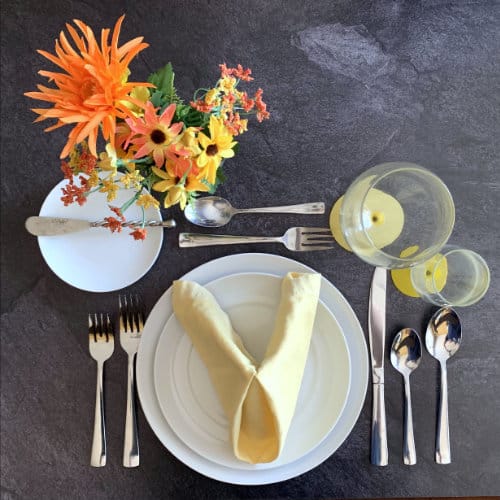
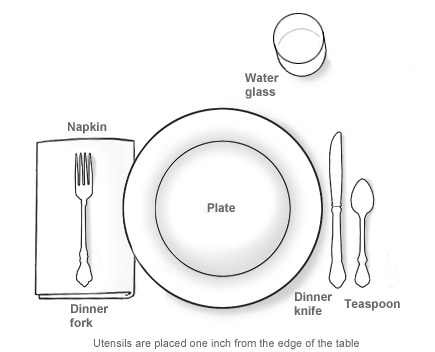
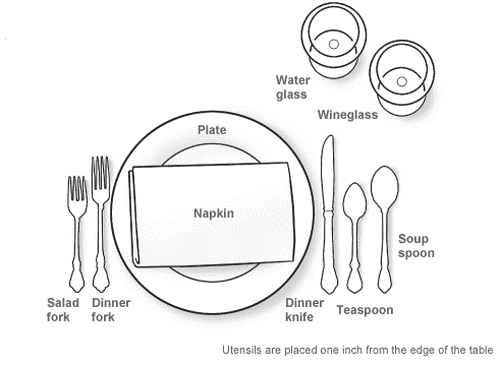
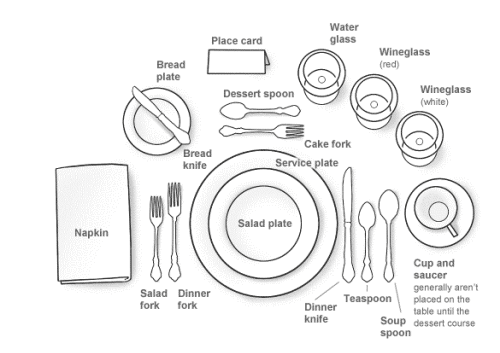
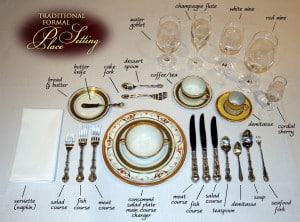
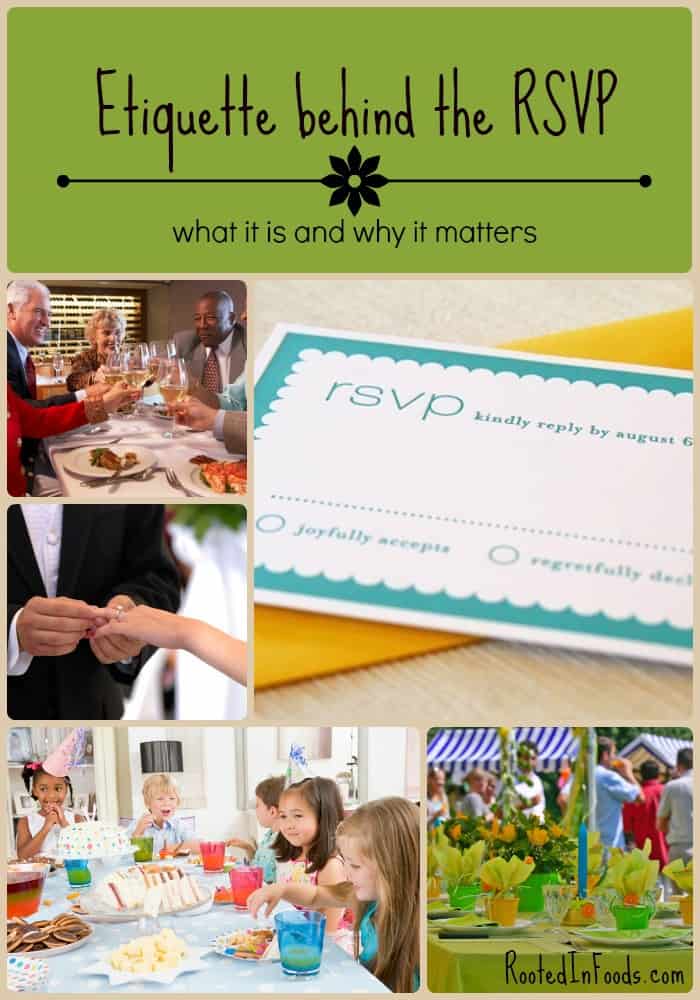
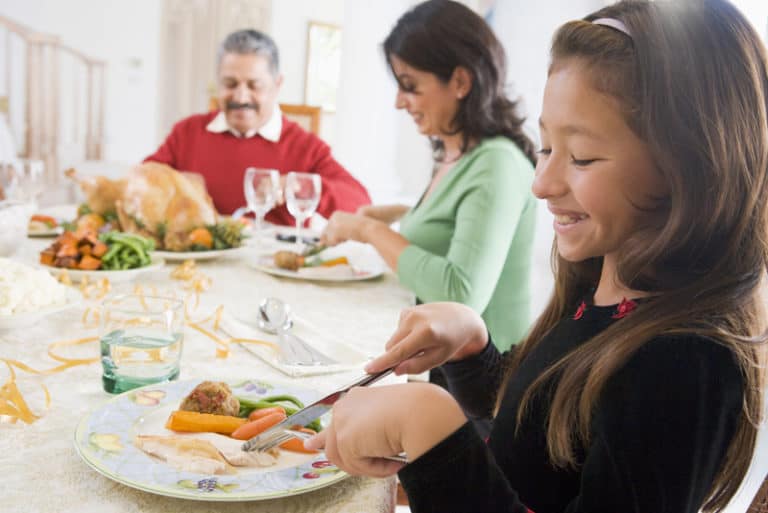
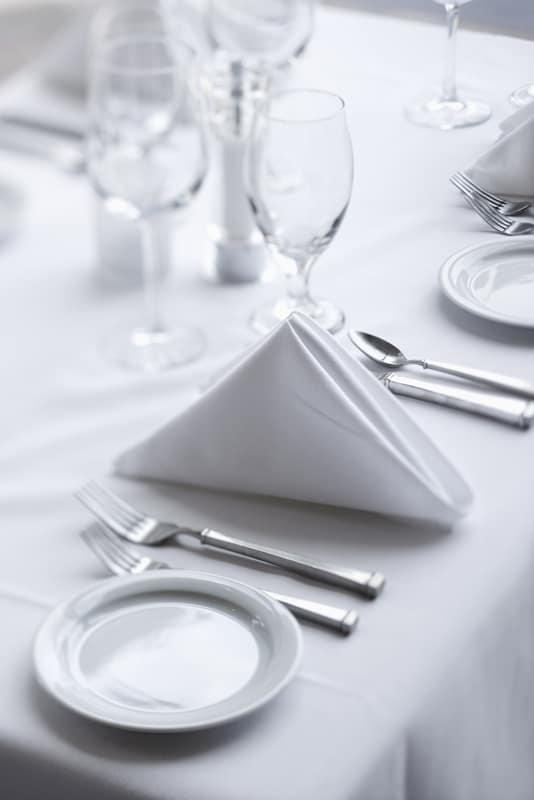
I need a copy of this link sent to my email, please, so I can save it, print it out, and send a copy of it to each of my grown children. Thanks!
I was a busboy in the 1980’s at a fancy restaurant. Where do you put the butter pat dish? I remember butter having it’s own dish somewhere up on left near where I put the salt and pepper shakers. I hated setting the tables. I at least had a template to follow. I also had to fold the napkins into a boat like shape.
It can definitely be tedious when you have to set a lot of tables, especially the napkin folding! That was always my favorite part, though. Different facilities use different types of butter (and place them differently). I rarely see something other than pre-wrapped butter pats … always on one or two small plates in the middle of the table to be passed.
Beautiful. I and my Father have actually had the pleasure of meeting the Royal Highness, Her Majesty Queen Elizabeth the II while we lived in a small Middle Eastern country back in the 1970’s. She was most definitely very graceful and I am sure she would approve whether the table was set perfectly or not. She understood that not everyone grew up like she did and was kind to one of the locals who didn’t have table etiquette. I highly doubt he realized it either, lol.
I thought bread and butter plates were not used in formal place settings?
They really should be used any time bread is served, whether the dinner is formal or not, but aren’t typically used in American homes for every-day casual dining.
what is the typical oz used for water glasses and what is the typical oz glass is used for red wine?
Water glasses are 8-12 ounces. The standard wine pour is 5 ounces although glasses will hold around 12.
Where do you place the iced tea spoon?
Right next to the knife. It goes knife, iced tea soon, soup spoon, the tea spoon ( or dessert spoon, on the right side of the plate…….I think. 😃
Great question! If one is used, it’s placed on the outer right of the place setting on an iced teaspoon rest. The tea would be served in a tall glass on a doily and saucer. Traditionally, this would only be seen at an informal meal. To be honest, I don’t see iced teaspoons used very often anymore, even when they should be.